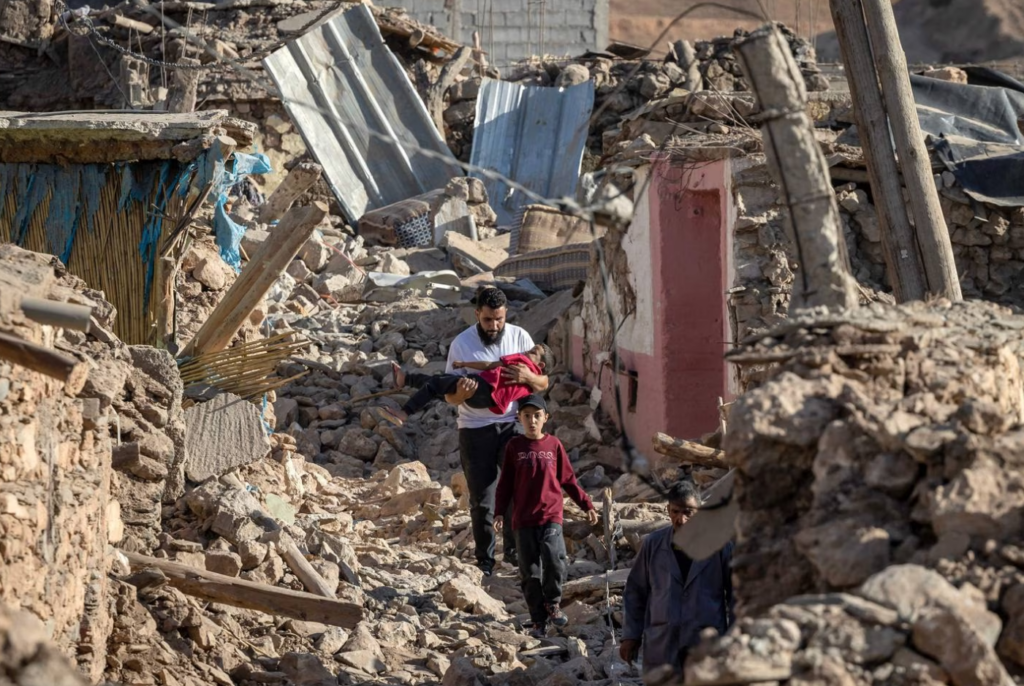
Tikht, Morocco, witnessed a delicate and heartbreaking operation as rescuers worked painstakingly to extract the body of a woman from the wreckage. This village was one of the hardest-hit areas during Morocco’s deadliest earthquake in over six decades, and it essentially ceased to exist.
Omar Ait Mbarek, the 25-year-old fiancé of the deceased woman, watched the search with tears in his eyes. He had been on the phone with her when the earthquake struck, and he knew she was gone when the line suddenly cut out.
The searchers, amidst a somber crowd, carefully removed the woman’s body and also found her phone, which they handed over to Omar. Nearby, Tikht, a village that was once home to at least 100 families, lay in ruins, with timbers, masonry, broken plates, shoes, and remnants of life scattered about.
Mohssin Aksum, who had family in the village, described the devastation, saying, “Life is finished here.” Like many of the affected villages, Tikht had traditional homes constructed with a mixture of stone, timber, and mud mortar. Many residents, mourning their loved ones, gathered among the ruins, expressing shock as they hadn’t experienced earthquakes in the area before.
Abdelrahman Edjal, a 23-year-old student who lost most of his family, recalled the moment the earthquake struck and how he tried to save his father from their collapsing home, but sadly, he couldn’t. Twisted steel reinforcement rods protruded from the rubble, indicating that some newer building techniques were used alongside traditional ones.
The earthquake struck a region where daily life was already challenging, located far from the job opportunities offered by Marrakesh’s tourist industry. Mohssin Aksum, who lived in Rabat but had local ties, explained that the quake had taken away the little that people had, including their livestock buried beneath the debris.
Emergency housing in the form of yellow tents was set up on the road into town, and government services provided camp beds and other necessities. Non-profit organizations were assessing the needs of the affected communities.
Many survivors were still in shock and couldn’t plan their next steps. However, Omar Ait Mbarek was resolute about one thing – he would rebuild his house, holding his late fiancée’s dust-covered phone as he walked away amidst the rubble.







